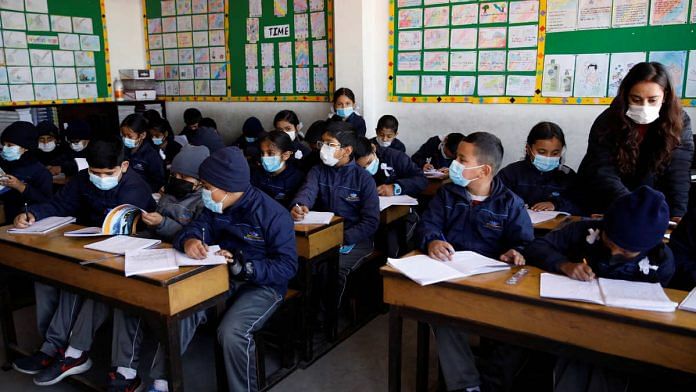Bengaluru: The role children play in spreading the novel coronavirus is unclear and complicated so far, with research findings on whether children can catch and transmit the virus oscillating between yes and no.
Adding to this series of contradictory findings is a new study from Geneva University that states that children can transmit the SARS-CoV-2 virus as easily as adults can. The researchers, belonging to the university’s medical school and hospital in Switzerland, analysed virus cultures from infected children and found that they shed or release the virus from their bodies as much and as frequently as adults do, indicating that transmission from them is possible.
The findings come on the heels of another study from the neighbouring country of France that has concluded that children do not transmit the virus, leading to stronger support for schools across the country and the world reopening.
Also read: RT-PCR, antigen, antibody, TrueNAT — all you need to know about the different Covid tests
Geneva study found viral load in kids comparable to that of adults
The study from Geneva has been published in the journal Emerging Infectious Diseases this week. The team conducted nasopharyngeal swab tests on 638 children, ranging in age from seven days to 16 years, with the average age being 12 years, from the end of January to the end of March. Of the children, 23 tested positive for Covid, among whom, 15 showed symptoms including fever and pneumonia. The researchers isolated the virus from 12 of these children who were symptomatic, including the week-old infant.
They found that the viral load (the quantity/concentration of virus in the bodies) in these children was comparable to adults at the time of diagnosis. The children also shed the infectious virus, capable of transmitting and infecting others, during acute illness stage. When the infectious virus itself was isolated from these children, multiple days after diagnosis, the viral load was still comparable to adults who were at a similar stage of illness.
There are limitations to the study, including the small sample size of children studied, which could indicate that children are not a major risk group for Covid, say the authors of the paper. By contradiction, another limitation was that the samples that were tested were older and because of both transport as well as diagnostic processing time, it is possible that there were a number of false negatives, thus underestimating the true spread of the virus. Owing to lockdown measures, follow-up sampling was not possible.
The researchers state in their paper,” SARS-CoV-2 viral load and shedding patterns of culture-competent virus in 12 symptomatic children resemble those in adults. Therefore, transmission of SARS-CoV-2 from children is plausible. Considering the relatively low frequency of infected children, even in severely affected areas, biological or other unknown factors could lead to the lower transmission in this population. Large serologic investigations and systematic surveillance for acute respiratory diseases and asymptomatic presentations are needed to assess the role of children in this pandemic.”
Also read: Living in a city with high air pollution increases chances of being infected by Covid
No conclusive evidence, studies contradict each other
Research on whether children can spread the novel coronavirus or not is ongoing across the world with no conclusive results yet. Most studies vacillate between saying they transmit as much as adults and that they transmit minimally to not at all.
Multiple studies have shown that children do not spread the virus, prompting schools to reopen, while several other studies have shown that they do. Some studies have found that kids are at a lower risk of catching the virus, specifically at half the risk adults are. Many other studies have also indicted that most kids tend to be asymptomatic.
Other studies have shown that while kids might be at a lower risk, this varies with age, but once again, the data is inconclusive and it is too early for scientists to determine with certainty the role children play in spreading and extending the ongoing pandemic.
Also read: Natural history museums preserve clues to predict future pandemics



